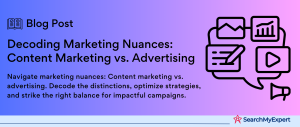Effective Ad Campaigns: Unlocking Success in Modern Marketing
The Essence and Impact of Effective Ad Campaigns
In the dynamic world of digital marketing, understanding and executing effective ad campaigns has become a cornerstone for business success. An effective ad campaign is more than just an advertisement; it’s a strategic amalgamation of creativity, market understanding, and targeted messaging designed to achieve specific business goals. These campaigns are pivotal in shaping brand perception, driving customer engagement, and ultimately influencing purchasing decisions.
Why Effective Ad Campaigns Matter in Today’s Marketing Landscape
- Audience Reach: With the digital space growing exponentially, ad campaigns provide a platform for businesses to reach a wider, more diverse audience.
- Brand Recognition: Consistent and creative campaigns enhance brand visibility, making your brand a familiar name among potential customers.
- Customer Engagement:
Engaging ad campaigns can spark conversations, encouraging interaction between the brand and its audience. - Conversion and Sales: Ultimately, the end goal of any campaign is to drive sales. Effective campaigns do this by persuasively communicating the value of a product or service.
Key Elements of a Successful Ad Campaign
- Clear Objectives: Establish what you want to achieve. This could range from brand awareness to product sales.
- Understanding the Audience: Tailor your message to the specific needs and preferences of your target demographic.
- Creative Content:
The creative aspect of your ad campaign is what captures attention and communicates your message. - Channel Strategy:
Choosing the right platforms (like social media, search engines, or traditional media) is crucial for reaching your audience. - Data-Driven Approach: Utilize analytics and data to optimize campaigns and improve effectiveness.
- Consistency Across Channels: Ensure your campaign maintains a consistent message and aesthetic across all marketing channels.
- Engagement Metrics: Monitor engagement through likes, shares, comments, and other interactions to gauge the campaign’s impact.
Understanding Your Audience: The Foundation of Effective Advertising
The Art of Audience Identification
In the realm of advertising, the adage “know your audience” is more than just a piece of advice; it’s a strategic imperative. Identifying your target audience involves delving into the specifics of who they are, what they like, and how they behave. This knowledge forms the bedrock upon which successful ad campaigns are built.
Delving into Demographics, Interests, and Behaviors
- Demographics:
Start with the basics – age, gender, location, education, and income level. These factors offer a primary sketch of your audience. - Interests: What are their hobbies, preferences, and inclinations? This information helps tailor content that resonates.
- Behaviors:
Understanding purchasing patterns, online activity, and lifestyle choices can give insights into how best to engage your audience.
Conducting Market Research: A Key to Unlock Audience Insights
Market research is a powerful tool that can provide valuable insights into your target audience’s needs, preferences, and pain points. This process involves gathering and analyzing data to better understand who your audience is and what drives their decisions.
Techniques for Effective Market Research
- Surveys and Questionnaires: Direct feedback from potential customers can reveal much about their needs and expectations.
- Focus Groups: Engaging with a small, diverse group can provide in-depth insights into consumer behavior and attitudes.
- Social Media Analytics:
Platforms like Facebook, Instagram, and Twitter offer a wealth of data on user engagement and preferences. - Competitor Analysis: Observing your competitors can help identify gaps in the market and opportunities for differentiation.
Creating Buyer Personas: A Blueprint of Your Target Audience
Buyer personas are fictional representations of your ideal customers based on real data and some educated speculation about demographics, behavior patterns, motivations, and goals. They help in visualizing the audience, making it easier to tailor campaigns effectively.
Crafting Comprehensive Buyer Personas
- Segment Your Audience:
Divide your audience into different segments based on shared characteristics. - Detail Each Persona:
For each segment, create a detailed persona including name, age, job, interests, and pain points. - Use Real Data:
Base your personas on real data from your research to ensure they accurately represent your audience. - Review and Revise: As your business evolves, so should your personas. Regularly update them to reflect any changes in your audience.
Understanding your audience is not just about collecting data; it’s about interpreting this data to create meaningful, engaging, and effective ad campaigns. By combining demographic analysis, in-depth market research, and the creation of detailed buyer personas, you can lay a strong foundation for your advertising efforts.
Defining the Target Audience
Understanding the Concept of Target Audience
A target audience is the specific group of people you want to reach with your advertising campaigns. These are the people most likely to be interested in your product or service, and are therefore more inclined to engage and convert. Identifying your target audience is crucial for several reasons:
- Efficiency: By targeting your marketing efforts towards a specific group, you spend resources more effectively.
- Relevance: Tailored messages resonate more with an audience that finds them pertinent to their needs and interests.
- Engagement: A well-defined audience is more likely to engage with your brand, fostering loyalty and advocacy.
Identifying Your Target Audience
To pinpoint your target audience, consider these key aspects:
- Demographics:
Analyze age, gender, income, education, and occupation to get a clear picture of who your audience is. - Interests and Preferences:
Understand what they like, dislike, and value. This insight helps tailor your messages and offers. - Behavioral Patterns:
Study their purchasing behavior, online activity, and brand interactions. - Psychographics:
Delve into their lifestyle, attitudes, and beliefs.
Tools and Techniques for Audience Analysis
- Surveys and Questionnaires:
Directly ask your audience about their preferences and habits. - Social Media Analytics: Use platforms like Facebook Insights or Twitter Analytics to get demographic and interest-based data.
- Google Analytics:
Analyze website traffic to understand who’s interested in your content. - Market Research: Use existing research or conduct your own to understand broader market trends.
Crafting Compelling Ad Copy and Visuals
The Power of Persuasive Ad Copy
Ad copy is the text in your advertising campaigns. The right ad copy can make the difference between a successful and a forgettable campaign. Key characteristics include:
- Clarity:
Your message should be easy to understand at a glance. - Conciseness: Keep it short and sweet to maintain attention.
- Persuasiveness:
Use persuasive language that drives action, such as strong calls-to-action (CTAs). - Relevance:
Tailor your copy to speak directly to your target audience’s needs and desires.
Creating High-Quality Visuals
Visual elements in your ads are just as crucial as the text. They grab attention, evoke emotions, and can convey complex messages quickly. To maximize their impact:
- Use High-Quality Images: Whether photos or graphics, quality is key to professionalism and credibility.
- Stay Brand-Consistent: Ensure visuals align with your brand identity (colors, fonts, style).
- Incorporate Videos:
Videos can be highly engaging and effective in telling a story or demonstrating a product. - Test and Optimize: Regularly test different visuals to see what resonates best with your audience.
Integrating Copy and Visuals
The synergy between ad copy and visuals is what makes an ad campaign truly compelling. Ensure they complement each other and convey a unified, clear message.
Selecting the Right Advertising Channels
Diverse Advertising Channels
Navigating the world of advertising channels can be like exploring a vast ocean of possibilities. Each channel offers unique advantages and caters to different types of audiences. Let’s dive into the most prominent ones:
- Search Engines (SEM):
Platforms like Google and Bing allow advertisers to display ads in search results. This is great for capturing high-intent audiences actively searching for related products or services. - Social Media Platforms: Facebook, Instagram, LinkedIn, and others offer highly targeted advertising based on user demographics, interests, and behaviors.
- Display Networks:
These networks display ads across various websites, targeting audiences based on their browsing history and interests. - Email Marketing: Directly reaching out to customers through their inbox, offering a more personalized approach.
- Influencer Marketing:
Collaborating with social media influencers to tap into their follower base. - Native Advertising:
Seamlessly integrating ads into content, making them less intrusive and more contextually relevant.
Choosing the Right Channels
The key to selecting the right advertising channels lies in understanding your target audience and campaign objectives:
- Audience Preferences: Where does your target audience spend most of their time online?
- Campaign Goals: Are you aiming for brand awareness, lead generation, or direct sales?
- Budget Considerations: Each channel has different cost structures and ROI potentials.
Implementing Effective Campaign Measurement
Key Metrics for Success
Measuring the success of advertising campaigns is like navigating through a maze of data. Key metrics include:
- Impressions: How many times your ad was displayed.
- Clicks: The number of clicks your ad receives.
- Conversions: Actions taken by users, such as purchases or sign-ups.
- Cost Per Acquisition (CPA): The cost of acquiring a customer through a specific ad.
Continuous Monitoring and Optimization
Campaign measurement isn’t a one-time activity. It’s a continuous process involving:
- Regular Analysis: Regularly check performance data to understand what’s working.
- A/B Testing:
Experiment with different ad elements to see what performs better. - Adjustments:
Based on data, tweak your campaigns for improved performance.
The Blueprint for Effective Ad Campaigns
Crafting an effective ad campaign is akin to assembling a complex puzzle where each piece plays a crucial role. Here’s a recap of the essential elements:
- Identifying the Target Audience: It’s all about knowing who you’re talking to. Understanding your audience’s demographics, interests, and behaviors is the foundation of any successful campaign.
- Crafting Compelling Ad Copy and Visuals: Words and images must dance together in harmony. Clear, concise, and persuasive copy combined with high-quality, relevant visuals can capture and retain attention.
- Selecting the Right Channels: Like choosing the right weapon for battle, picking the appropriate advertising channels is vital. Whether it’s search engines, social media, or display networks, the choice must align with your audience’s habits and campaign objectives.
- Implementing Effective Campaign Measurement:
You can’t manage what you can’t measure. Tracking key metrics like impressions, clicks, conversions, and CPA allows for ongoing optimization and improvement.
The Impact on Brand and Business
When executed skillfully, ad campaigns are not just a marketing expense; they are an investment in your brand’s future. Here’s their impact:
- Brand Growth:
Successful campaigns increase brand visibility, enhance reputation, and build customer loyalty. - Business Success: They drive sales, generate leads, and provide a high return on investment, contributing directly to business growth.
Remember, effective ad campaigns are a mix of art and science — creativity coupled with data-driven insights leads to success.
Conclusion
In the ever-evolving landscape of digital advertising, mastering the art of crafting effective ad campaigns is crucial for brand growth and business success. From the initial step of identifying your target audience to the meticulous process of selecting the right advertising channels, each phase plays a pivotal role. The synergy of compelling ad copy and visuals, coupled with a strategic approach to channel selection, sets the stage for impactful advertising efforts. Furthermore, the significance of rigorous campaign measurement cannot be overstated, as it ensures continuous optimization and refinement.
As we’ve journeyed through these steps, it’s clear that successful advertising is a blend of creativity, strategy, and data-driven insights. By embracing these elements, businesses can create ad campaigns that not only resonate with their audience but also drive meaningful results, fostering brand loyalty and accelerating business growth. The path to effective advertising is intricate, but with the right approach, the rewards are substantial and enduring.
Connect with leading Advertising Agencies for unparalleled results
Table of Contents
Toggle






